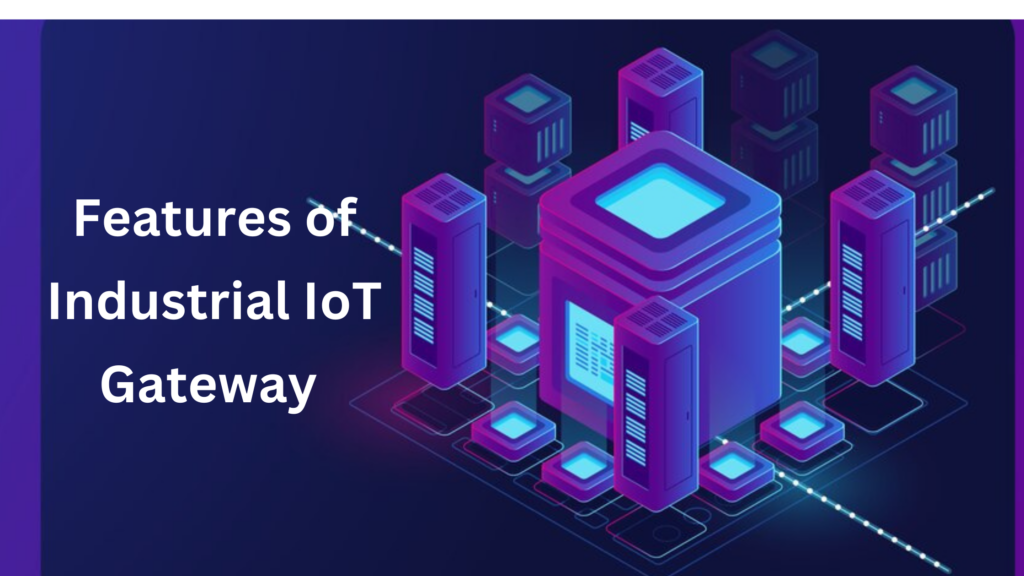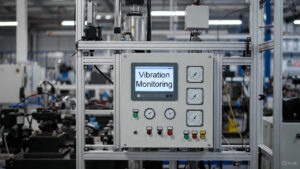Introduction
The Internet of Things (IoT) continues to expand and stimulate cross-industry innovation due to its network of interconnected devices. A gateway serves as a data communication route, facilitating information transmission between edge devices and the cloud. Before getting into IoT gateways, it’s critical to understand their functions and the key cloud platforms they connect to.
IoT gateways act as smart central hubs for IoT devices. An Internet of Things (IoT) gateway is a physical hardware or software program that connects the cloud to IoT devices, including controllers, sensors, and smart gadgets.
In this blog, we will discuss the meaning of an industrial IoT gateway, its key benefits, components, and functional features.
What is an Industrial IoT Gateway?
An Industrial IoT gateway is a localized system that collects, stores, processes, and analyses data at the network’s perimeter. It reduces the pressure on cloud services and data centers. The gateways collect data from sensors, devices, and machines and provide processed data to the cloud for remote monitoring.
Key benefits of IIoT gateway in the industrial sector
Data integration with seamless communication
IIoT gateways serve as intelligent mediators, enabling smooth communication among a wide range of industrial equipment. They connect to actuators, sensors, and older machinery using several communication protocols. Gateways next integrates and analyzes the initial data acquired from these devices, converting it into a format that IT systems can easily get.
Flexibility and Scalability
Gateways provide a scalable solution, allowing for the smooth integration of new devices without requiring major infrastructure adjustments. Their modular architecture and varied connecting options allow for adaptation to changing needs and future development.
Data Protection
IIoT gateways act as a first line of safeguarding, processing both incoming and outgoing data to reduce security concerns. Gateways can include several types of security measures, such as encryption, access control, and network firewalls, to secure sensitive data and important industrial control systems from unauthorized access.
Enhance the Efficiency
IIoT gateways enable real-time data visibility and analysis, enabling companies to optimize manufacturing processes. Predictive maintenance capabilities enabled by gateway-collected data allow for proactive maintenance, reducing costly equipment breakdowns and unscheduled downtime. This connects to many different kinds of efficiency improvements, including decreased downtime, higher product quality, and reduced waste.
Key Components and Their Functional Features of Industrial IoT Gateways
Communication Interfaces
Wired Interface
Ethernet provides reliable and high-speed data transfer, which is essential in manufacturing facilities where stability and speed are required. Ethernet wires are insulated from electromagnetic interference to ensure constant performance.
Wireless Interface
The wireless interface provides flexible connectivity and easier deployment. This interface is an ideal choice for the shop floor because, due to this facility, devices can connect to the network wirelessly.
Data Processing Unit
Edge Computing Capabilities
Analyzes data locally on the gateway, eliminating the need to send massive amounts of data to the cloud. This reduces latency, leading to quicker response times and real-time decision-making capabilities.
Data Filtering and Aggregation
Data is collected from various kinds of sources and filtered to remove irrelevant or duplicated information. The collected information provides more simple, actionable illustrations, which is necessary for successful monitoring and analysis.
Security Features
Authentication
Strong protocols for authentication ensure that only trustworthy objects can interact with the system. Verifies the identification of devices and those who are seeking to access the network.
Encryption
Encryption secures data during transmission by turning it into a code that is only identifiable by authorized users. Encryption protects against unauthorized access and modification.
Management and Monitoring Tools
Alert and Notification Systems
Provides real-time alerts and notifications in the case of anomalies or important occurrences. This ensures that operators are quickly aware of problems and can take appropriate action to limit risks or fix them.
Dashboard Interfaces
Offers an easy visual interface for monitoring and managing linked devices and systems. Dashboards give real-time insights, performance indicators, and control options, allowing operators to better manage operations.
Protocol Support
Industrial Protocol
Modbus is a commonly used protocol for connecting industrial machinery devices. It enables communication between several devices on the same network and supports both serial and Ethernet connectivity.
OPC UA is a machine-to-machine communication protocol for industrial automation. It enables the secure and reliable flow of data in industrial settings, allowing for compatibility across various systems.
IoT Protocol
MQTT provides for connections to remote locations that require a minimal code size or have limited network capacity. A compact data protocol made for small sensors and mobile devices.
CoAP is a web transfer protocol designed specifically for usage with limited nodes and networks in the Internet of Things. The aim is to enable inexpensive, low-power sensors to communicate via HTTP.

Features of Industrial IoT gateway
Data Acquisition
The process involves capturing analog signals and transforming them into digital data that can be processed and analyzed. Data acquisition is a key aspect of Industrial IoT Gateways, allowing data to be collected from many sensors, machines, and devices in an industrial context.
Real-time Data Visualization
Real-time data helps operators monitor and analyze data in real-time, giving them quick insights into operational performance. It visualizes data collected from industrial machinery and systems.
Remote Management
This functionality is critical for ensuring operational efficiency and responding rapidly to problems. Remote management encourages workers to monitor and control industrial equipment and systems from anywhere. It enables remote access to industrial systems, reducing the need for on-site visits and enabling rapid troubleshooting.
Predictive Maintenance
Industrial IoT gateways can identify variations and patterns in data from sensors and devices, indicating possible issues. Predictive maintenance employs data analytics to predict equipment breakdowns before they happen.
Integration with Cloud Platforms
Integration offers flexible and scalable techniques for managing massive amounts of data. Integration with cloud platforms enables industrial IoT gateways to transfer data to cloud-based systems for further analysis, storage, and management.
Conclusion
This blog explains how, by integrating multiple elements and functional characteristics, these gateways enable industries to achieve more efficiency, lower costs, and increase overall production through real-time monitoring, predictive maintenance, and advanced data analysis. We mentioned
In short, industrial IoT gateways are not only data translators; they act as the foundation of an effective IIoT strategy. These gateways provide interaction and collaboration between IT and OT systems, paving the way for major gains in operational efficiency, data-driven choice-making, and overall production efficiency.





